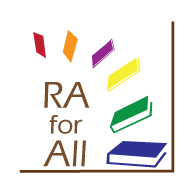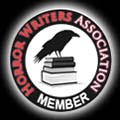Cathleen Keyser is a cataloger for NoveList and a huge horror fan. She asked me if she could write a post to all of you about the HUGE RA implications of cataloging all genre fiction, but especially horror. I took her up on the offer immediately. I am not a cataloguer but I truly appreciate the work they do, and those of us who work the public desks often forget how integral to our work these librarians are.
All library workers who help fiction readers need to read this post. She provides useful tips and you don’t need a subscription to NoveList to reap the benefit here. Cathleen also has an honest affection for horror which comes through in the post.
Click here for Cathleen’s bio page
You can follow her on Twitter @Cathleenkeyser.
***********************************************
Like many other librarians, my first real library job was at a video store. It was a great experience – not only was I in the land of “no late fees,” but it gave me my first taste of RA. I knew what to recommend to the RomCom devotees, the avant-garde tastemakers, the teenage sleepover parties, the hopeless stoners – you name it, I could list off several titles on the shelf to check out. But the best part was the wealth of horror films at my fingertips. This is where I started learning the finer points of horror – the different storylines, the spectrum of tone, and the variety of characters.
Fast forward to now. I’ve built on that foundation at my current library gig – metadata librarian. What’s the connection between metadata and readers’ advisory, you ask? The catalog is one of the first place your users go to find books – the metadata there is one of the best resources your patrons can use to find books in your collection, especially when it comes to remote users. Plus, that metadata can also be used by librarians to provide many in-house, self-directed RA services, like book displays, bookmarks, shelf-talkers, and book lists. As they say, metadata is a love note to the future – taking the time to catalog now creates access for the future needs of patrons and staff alike. And what better genre to pay a little extra love and attention to than horror?
As a metadata librarian at NoveList, I and my colleagues get to develop our own controlled, user-friendly vocabulary for addressing all aspects of a book – and we pay special attention to genre fiction because we know how important it is to many readers. We create and maintain all kinds of headings from subjects and time periods to setting, writing style, tone, or pace. Because of the time involved, not everyone can or should do what we do, so our goal is to provide public librarians with the tools to do effective RA.
Regardless of whether or not you use NoveList, you can use our principles to talk about books. Horror can be just as much a challenge to catalog as it is to suggest to readers – as we saw in Jonathan Janz’s post, many people think of horror as “a mindless, blood-splattered cesspool,” rather than as a genre about humanity’s capability for nobility. Here are some tips and tricks for cataloging horror that can be applied especially when all you’ve got (or got time for) is the book jacket:
- Horror can overlap with other genres – add dual genre headings when possible. The Horror Writers Association has the great quote that “the best-selling book of all time, the Bible, could easily be labeled horror, for where else can you find fallen angels, demonic possessions, and an apocalypse absolutely terrifying in its majesty all in one volume?” The term horror can be a deal-breaker for many – which is why many horror novels are marketed as suspense, thriller, fantasy, or even literary fiction. For example, Scott Smith’s The Ruins is often listed as suspense. While this genre can fit and does broaden the audience for Smith’s great visceral horror tale, not also claiming it as horror can be a disservice. Cataloging it as both horror and suspense will broaden the fan base and attract more readers.
- Give readers a hint of the type of horror through subject or genre headings.
Horror is unique in that there aren’t really that many big subgenres like there are in other areas (for example, Romance). Yes, there are many niche genres, but those typically are very small and probably aren’t well represented in a typical library collection. Horror is more of a spectrum. The best way to think of this is on a “dread to gore” scale. On one end is dread – these are the more atmospheric or creepy tales with little to no gross parts. The uneasiness is generated more with mood rather than blood and guts. Think classic horror or authors like Shirley Jackson, Lovecraft, and some Stephen King. On the opposite end of the spectrum is gore. These books let it all hang out – guts and all. Some might find these gross, of poor taste, or just too scary while others will love the shock, gruesomeness, or just the fact that these books go over the top. Think Clive Barker, Poppy Z. Brite, and Nick Cutter. At NoveList, we have tone appeal terms that help us get at these intangible elements. But there are other ways to get at that mood if you can’t use appeal terms like we do. Try adding complementary genre headings like Ghost stories, Psychological Suspense, or Gothic Fiction for books more on the dread side. Subject headings will also help readers know what they are in for with gore – you know what you’re going to get with headings like Cannibalism, Torture, or Necrophilia, just to name a few.
- Describe the mood through location headings.
Location is also critical when it comes to mood. It’s the cabin in the woods, the decaying castle, the desolate post-apocalyptic cityscape (or even the IKEA showroom). All have certain aspects that will play heavily into the storyline and mood, so it can really help readers to add a location heading that gets at that. Think Small towns, Haunted houses, Wilderness areas, or Castles, for example.
- Yes, Virginia, you can get at tropes through metadata.
Tropes are a HUGE part of horror, but it can be tricky to get at those with subject headings. There aren’t many qualifiers you can add, so no creepy clowns, wacko religion, or psycho dads. If you’re not familiar with horror, you might not know where to start. A shortcut I recommend is to ask, “what is it about this that is scary?” Is it a person? A place? Most tropes relate back to this concept. I try to add a subject heading that gets at that gut-punch. Think character types (vampires, zombies, etc.) or things (animals, cell phones). While this won’t let you get at the more specific tropes, it’s a way to get at some.
While not all of us have the luxury of spending huge amounts of time cataloging, it is becoming more and more important. Putting information in the catalog is a way to direct readers to other materials you have in the collection. It is the conduit for readers to access books, which is why miscataloging or sparse cataloging leads to missed opportunities. Lisa Schimmer (you might have heard of her) describes cataloging as way to create a path of discovery. A reader can look at a book they like and follow the trail of headings to find others, a path that then fans out to great recommendations. But in order for that to happen, cataloging has to happen. While it is not as flashy or glamorous as a book group or a library program, it’s a way to help people steer themselves on their own path, and for horror aficionados, a path to find their perfect chainsaw-murder-deserted-castle-Bruce-Campbell-esque bedtime story of their dreams nightmares.




No comments:
Post a Comment